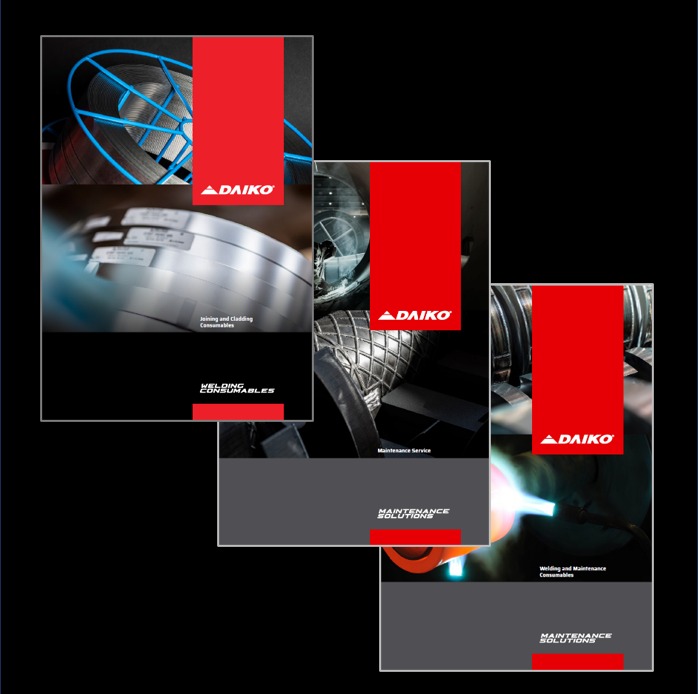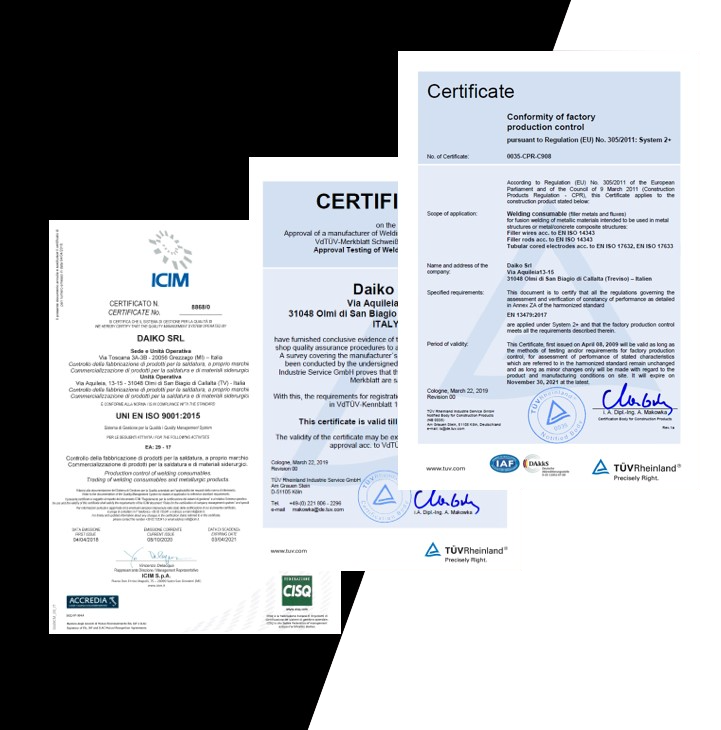- Home
- >
- All DAIKO products
- >
- CAST IRON
- >
- Fe-V
Fe-V
Application
This specialized product is designed for the welding and replenishment of cast iron, particularly in the repair of small pits and cracks. It finds application in scenarios where post-weld machining is not required. Notably, when welding steel to cast iron, the higher shrinkage of steel compared to cast iron can result in the development of high stresses during the cooling of the weld. These residual stresses have the potential to be severe enough to induce cracking. The deposited material shares the same color as the base material, ensuring a seamless visual integration. However, the structural refinement of the deposit is achievable solely through grinding. This product is well-suited for the repair of large components, offering a reliable solution for addressing casting imperfections without the need for subsequent machining processes.
Alloy Type
Electrode with special basic-graphite coating, developed for welding and repairs defects in hot casting of cast irons.
Microstructure
Lamellar cast-iron.
Materials
It is the most economical way to go for repairing various kinds of cast iron products providing that machinability of the weld deposit is not required and where weld shrinkage stress is not a concern.
Welding & PWHT
The meticulous process of preparing the welding area involves the removal of the casting skin through precise methods such as machining, grinding, chipping, or other suitable means. When addressing casting defects, utmost care is essential to eliminate any defective metal until reaching the sound base metal before commencing welding. Furthermore, it is imperative to ensure the eradication of all oil, grease, dirt, or other foreign materials, achieved through the use of suitable solvents. In instances where oil, grease, or solvents have permeated the casting, a strategic application of heat to the welding area is recommended until volatilization is no longer observed. Typically, a temperature of 400°C proves sufficient for this operation, ensuring the removal of impurities and contaminants. Selective application of preheating becomes necessary to prevent excessive stresses in other parts of the casting. In this context, ESt electrodes are employed at low amperage to minimize the dilution effect in the fusion zone, thereby reducing the risk of weld and base metal cracking. Precision is maintained in bead application, with shorter and widely separated beads facilitating even heat distribution. Each bead is subsequently peened lightly to enhance the integrity of the weld. While the slag volume is generally low, it tends to be highly alkaline. Therefore, the comprehensive removal of residual slag is crucial, especially if the weld area is slated for painting. This detailed approach ensures a thorough and effective preparation of the casting for the subsequent welding process.
Products of the line Fe-V
| Product name | Process | AWS specifications | EN ISO specifications | |
| G-TECH 301V | SMAW |
AWS A5.15
E St |
EN ISO 1071
E C Z 1 |
|
| G-TECH 301 | SMAW |
AWS A5.15
ESt |
EN ISO 1071
E C Z 1 |


